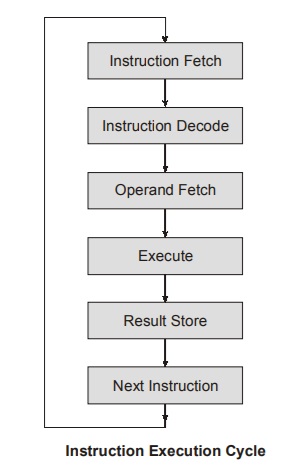What is the functionality of Control Unit?
A CPU contains three main sections: the register section, the arithmetic/logic unit (ALU), and the control unit. These sections work together to perform the sequences of micro-operations needed to perform the fetch, decode, and execution of every instruction in the CPU’s instruction set (shown in the following figure). The operation or task that must perform by CPU to execute an instruction are:

- Fetch Instruction: An instruction, stored in the memory, is fetched into the control unit by supplying the memory with the address of the instruction.
- Decode (Interpret Instruction): The control unit decodes the instruction in order to find the sequence of operation necessary to execute it.
- Memory (Operand Fetch/Data Fetch): Any data necessary for an instruction is fetched from the memory by the control unit and stored in the datapath.
- Execute (Process data):The operation (Arithmetic or Logical) is performed within the datapath.
- Write (result store): The result of the operation is possibly written to the memory.
<< Previous | Next >>
Must Read: What is Computer Organization and Architecture?
WhatsApp Group
Join Now
Telegram Group
Join Now

